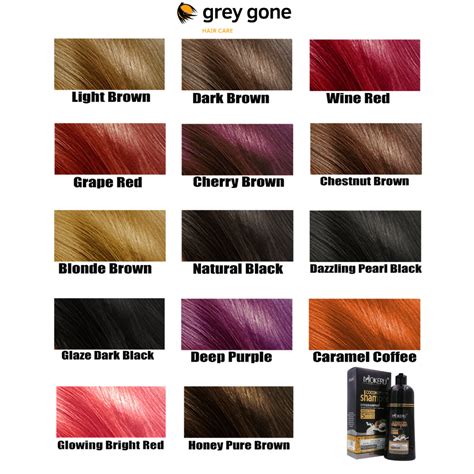With the burgeoning popularity of natural hair movements, embracing your natural texture and hues has become a celebrated trend. However, adding a touch of color can further enhance your natural beauty, accentuate your unique features, and express your personality. This comprehensive guide explores the best hair color options for natural hair, empowering you to make an informed decision that complements your skin tone and hair texture.

Understanding the Basics of Hair Color for Natural Hair
Before embarking on your hair color journey, it’s crucial to understand the fundamentals. Natural hair contains a pigment called melanin, which determines its color. When hair is colored, the melanin pigments are either lightened or darkened, resulting in a different hue.
The three main types of hair color are:
-
Permanent Color: This type of color contains ammonia, which penetrates the hair shaft and alters the melanin pigments permanently. It offers long-lasting results and complete gray coverage.
-
Semi-Permanent Color: Semi-permanent color uses milder agents to color the hair cuticle, creating a vibrant effect that fades over time. It typically lasts 6-12 washes.
-
Temporary Color: Temporary color does not penetrate the hair shaft and washes out with the next wash. It’s an ideal option for experimenting with different colors without long-term commitment.
Choosing the Best Hair Color for Your Natural Hair
Selecting the right hair color for your natural hair depends on several factors, including:
-
Skin Tone: Determining your skin tone (warm, cool, or neutral) helps narrow down complementary hair color options.
-
Hair Texture: The porosity of your hair (fine, medium, or coarse) influences color absorption and retention.
-
Personal Preferences: Ultimately, the best hair color is the one that you love and makes you feel confident.
Best Hair Colors for Natural Hair by Skin Tone
Warm Skin Tones:
-
Golden Brown: Rich golden hues complement warm skin tones by enhancing the natural warmth.
-
Chocolate Brown: Deep chocolate brown adds depth and dimension, creating a sophisticated look.
-
Caramel: Lighter caramel tones create a sun-kissed effect that illuminates warm skin tones.
Cool Skin Tones:
-
Ashy Blonde: Ashen blonds neutralize yellow undertones, creating a cool and chic effect.
-
Blue-Black: Rich blue-black hues create a dramatic and edgy contrast against cool skin tones.
-
Burgundy: Deep burgundy tones add warmth and depth to cool skin tones without overpowering them.
Neutral Skin Tones:
-
Honey Blonde: Honey blonde hues blend seamlessly with neutral skin tones, creating a natural and radiant look.
-
Auburn: Rich auburn tones flatter neutral skin tones by adding warmth and dimension.
-
Copper: Vibrant copper tones complement neutral skin tones with their warm and eye-catching hues.
Best Hair Colors for Natural Hair by Texture
Fine Hair:
-
Highlights: Adding subtle highlights can create the illusion of thicker, fuller hair.
-
Balayage: This freehand painting technique creates a natural and gradual color transition.
-
Lowlights: Lowlights add depth and dimension, making fine hair appear more voluminous.
Medium Hair:
-
Ombré: Ombré involves blending two or more shades, creating a seamless transition from darker roots to lighter ends.
-
All-Over Color: A single color can give medium hair a polished and uniform look.
-
Demi-Permanent Color: Demi-permanent color is a gentle option that enhances shine and vibrancy without causing excessive damage.
Coarse Hair:
-
Semi-Permanent Color: Semi-permanent color is less likely to fade on coarse hair, providing longer-lasting results.
-
Permanent Color: Permanent color is effective in altering the pigment of coarse hair, creating bold and vibrant hues.
-
Highlights with Toner: Highlights can be toned down with a toner to create a more subtle and natural effect.
Common Mistakes to Avoid
-
Over-Processing: Excessive chemical processing can damage natural hair, leading to breakage, dryness, and scalp irritation.
-
Using the Wrong Color Developer: Using a color developer that is too strong or too weak can result in uneven color or damage to the hair.
-
Not Moisturizing: Color-treated natural hair requires extra moisture to maintain its health and prevent dryness.
-
Ignoring Undertones: Not considering the undertones of your skin and hair can lead to color choices that clash or look unnatural.
Conclusion
Selecting the best hair color for natural hair is a journey that requires careful consideration and expert guidance. By understanding the fundamentals of hair color, choosing a shade that complements your unique features, and avoiding common mistakes, you can achieve a vibrant and radiant look that enhances your natural beauty and empowers you to express your personal style.
